Server management platforms are critical for modern IT infrastructure in 2023. With hybrid cloud adoption accelerating, infrastructure is becoming more complex. Businesses need robust tools to monitor, automate, and secure their on-premise, cloud, and container workloads.
This article will explore the importance of server management in the current landscape. We will define what server management platforms are, and what core features you need.
By the end, you will have the knowledge to select the ideal server management platform for your unique needs in 2023 and beyond. The focus is on enabling your business through resilient, efficient infrastructure.
What is a Server Management Platform?
A server management platform is a software tool used by IT teams to monitor, automate, and secure servers in their infrastructure. The servers may be physical, virtual, cloud-based, or containerized.
Core functions of server management platforms include:
- Monitoring: Collecting metrics on server performance, uptime, and resource utilization. Monitoring helps detect problems proactively.
- Automation: Automating manual, repetitive server management tasks like configuration, provisioning, and patching. This improves efficiency.
- Security: Securing servers through measures like access controls, vulnerability scanning, and compliance reporting. This reduces risk.
- Reporting: Generating reports on server operations for capacity planning, cost optimization, and audits.
For modern infrastructure, server management platforms are essential for performance, efficiency, risk reduction, and compliance. They empower IT teams through visibility, automation, and control across heterogeneous environments.
What Features Do You Need for Managing Servers?
When evaluating server management platforms, here are key features to look for:
Monitoring Capabilities
- Infrastructure Monitoring: Monitor server health metrics like CPU, memory, disk, and services.
- Application Monitoring: Monitor application performance and end-user experience.
- Log Management: Aggregate and analyze logs from various servers and applications.
- APIs and Integrations: APIs to integrate with other tools like ticketing systems, and data analytics.
Automation and Configuration Management
- Configuration Management: Automatically manage server configurations and enforce standards.
- Patching Automation: Automate patching and updates across servers.
- Provisioning: Automate provisioning of new servers.
- Compliance: Automate compliance tasks like hardening, and benchmarking.
Security Features
- Access Controls: Granular access controls and role-based access.
- Vulnerability Scanning: Scan servers for vulnerabilities and misconfigurations.
- Compliance Reporting: Reports to demonstrate compliance with regulations.
- Behavioral Analytics: Detect anomalies and advanced threats across servers.
Reporting and Alerting
- Customizable Dashboard: Dashboard to view overall server operations.
- Alerting: Configure alert thresholds and notifications for problems.
- Custom Reports: Schedule and generate reports with filters for business needs.
- Visual Analytics: Visualize data like capacity usage trends over time.
The Best Server Management Platforms of 2023
Next, we will explore leading platforms that offer these critical capabilities:
1. Datadog
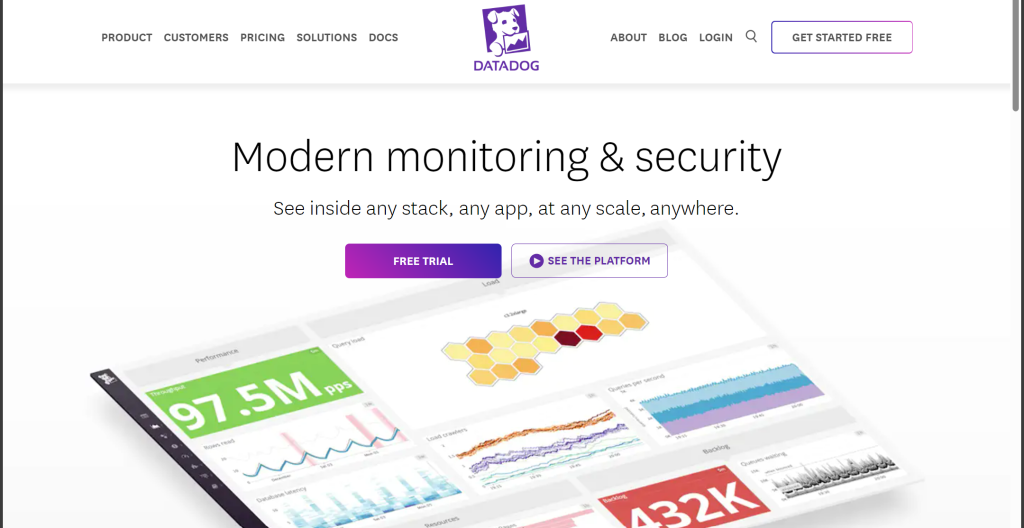
Datadog is a leading cloud monitoring and analytics platform used by organizations worldwide. Datadog integrates data from servers, databases, applications, tools, and services to present a unified view of an organization’s entire infrastructure.
With its SaaS-based data analytics and visualization, Datadog provides end-to-end observability across hybrid environments.
Key Features
- Application Performance Monitoring: Monitor application performance metrics like requests, latency, and errors. Pinpoint code-level issues quickly.
- Infrastructure Monitoring: Over 400 integrations to monitor servers, containers, databases, tools, and services.
- Log Management: Ingest, aggregate, and visualize logs from all infrastructure and apps.
- Security Monitoring: Detect threats, anomalies, and misconfigurations across infrastructure.
2. Rubrik
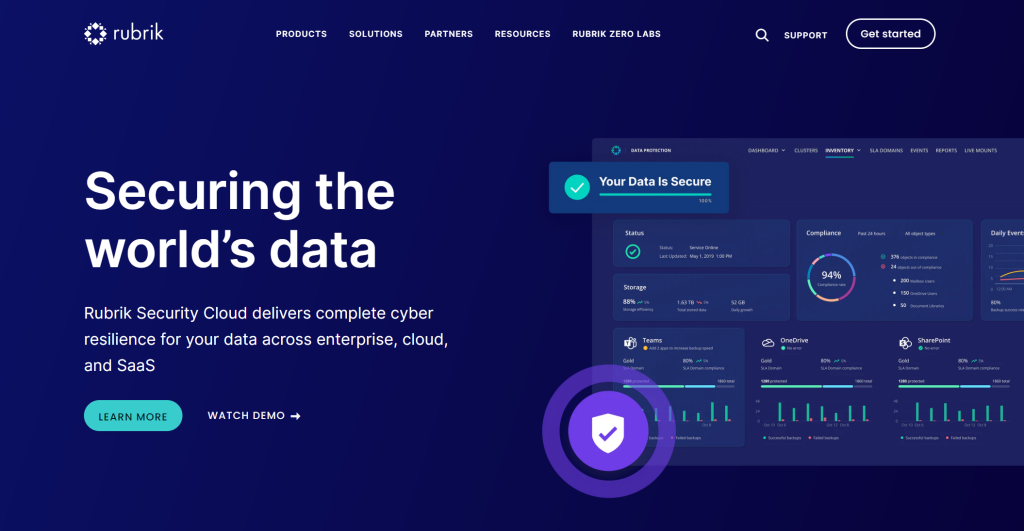
Rubrik provides data security and management for hybrid cloud enterprises. Rubrik offers data protection, replication, archiving, and compliance on a cloud-native platform. Using a “Zero Trust” architecture, Rubrik helps secure data against ransomware and insider threats.
Rubrik solutions are hardware agnostic, supporting physical, virtual, cloud and SaaS environments. Automated workflows provide rapid recovery.
Key Features
- Instant Recovery: Quickly recover from ransomware and other data loss with just a few clicks.
- Archival: Automatically archive data for compliance and retention.
- Ransomware Investigation: Investigate the impact of ransomware and recover cleanly.
- Sensitive Data Discovery: Discover sensitive data across the entire infrastructure.
- Orchestrated Application Recovery: Recover the full application stack in an orchestrated fashion.
3. Paessler PRTG
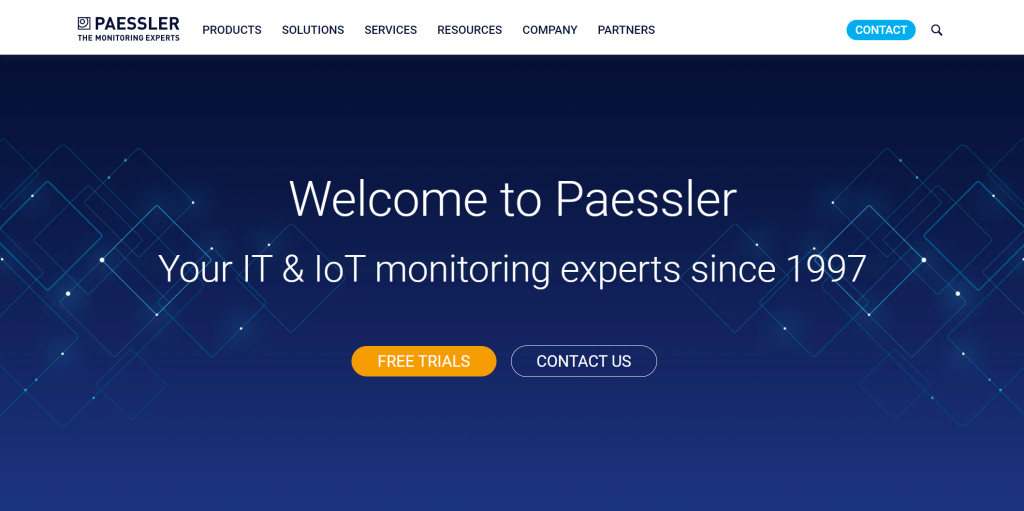
Paessler PRTG is a unified monitoring solution for the entire IT infrastructure. PRTG consolidates monitoring of systems, hardware, applications, traffic, and more. It helps manage IT infrastructure proactively with alerts and reports.
The solution features auto-discovery of devices, pre-configured sensors, and dashboards. This enables rapid deployment out of the box.
Key Features
- Infrastructure Monitoring: Monitor servers, switches, storage, apps, virtual platforms, and more.
- Traffic Monitoring: Monitor bandwidth usage and network availability.
- Alerting: Configurable alerts for system thresholds and Service Level Agreements.
- Reporting: Custom reports on capacity, uptime, and usage.
4. Nagios XI
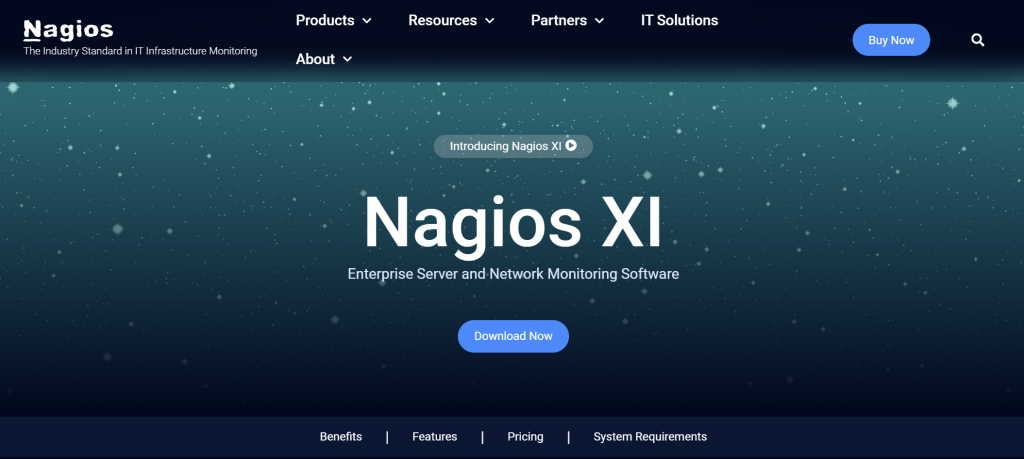
Nagios XI is an enterprise-grade IT infrastructure monitoring tool. Nagios XI features powerful alerting, graphing, and visualization capabilities. With its open design and community extensions, Nagios XI can monitor infrastructure components and business-critical applications.
Nagios XI provides monitoring professionals with the information needed to ensure high availability and performance.
Key Features
- Alert Profiles: Custom notification settings ensure critical alerts are never missed.
- SLA Reporting: Identify trends that are impacting service levels.
- Custom Dashboards: Tailored views of infrastructure health to suit each team.
- Plugins: 1000+ community plugins to monitor diverse applications, services, and devices.
5. Ansible
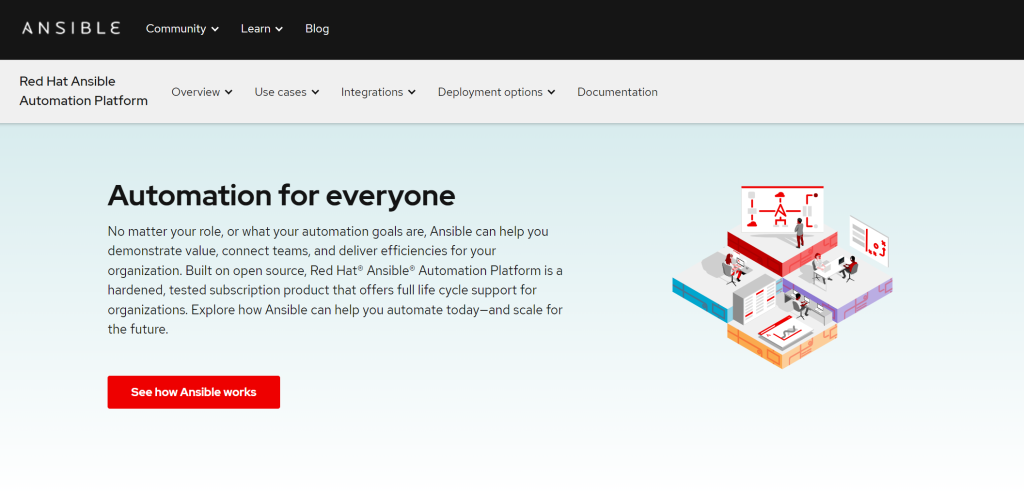
Ansible is an open-source automation platform from RedHat. It is agentless and uses SSH by default. Ansible enables automating provisioning, configuration management, app deployment, and orchestration. It has a simple syntax, making it accessible for IT teams vs. complex scripting.
Ansible uses an architecture with control nodes coordinating automation across managed nodes. Modules can be created to automate specific tasks.
Key Features
- No Agents: Agentless architecture using OpenSSH and WinRM.
- Idempotency: Tasks run repeatedly without side effects.
- Playbooks: Automation scripts that combine tasks sequentially.
- Roles: Reusable automation building blocks.
- Dynamic Inventory: Discover hosts and refresh inventory automatically.
6. NGINX
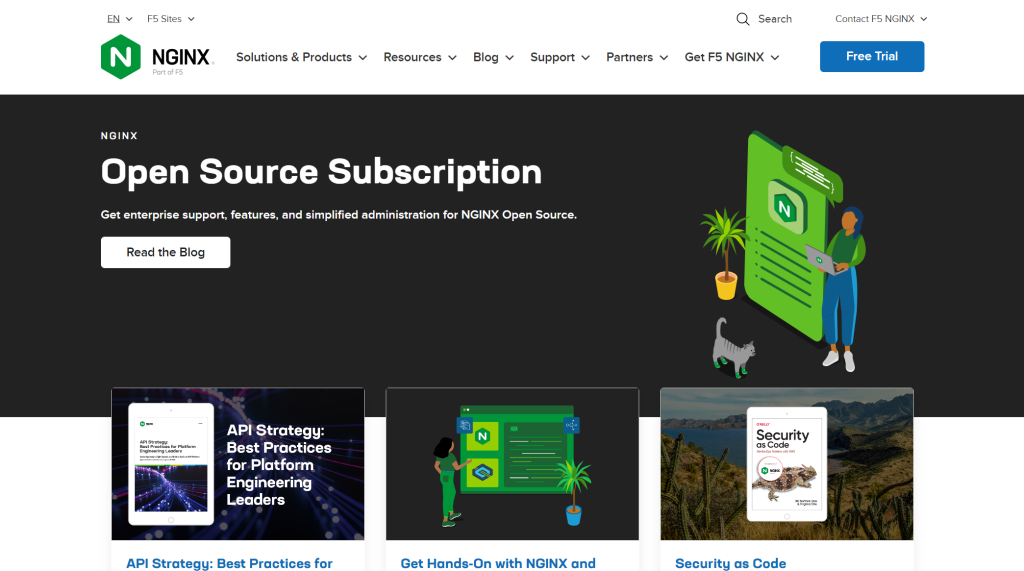
NGINX is a high-performance web server and reverse proxy for modern applications. NGINX excels at serving static and dynamic content quickly. It can also act as a load balancer and API gateway.
With capabilities like compression, caching, throttling, and gating, NGINX helps make apps fast, secure, and reliable. It can help scale web serving and application delivery capabilities.
Key Features
- Performance: Asynchronous architecture to handle thousands of connections with minimal overhead.
- Scalability: Hardware load balancing options to scale bandwidth.
- Security: Web application firewall, DDOS protection, and HTTPS offloading features.
- Monitoring: Real-time monitoring and metrics for web server health.
7. Oracle RDBMS
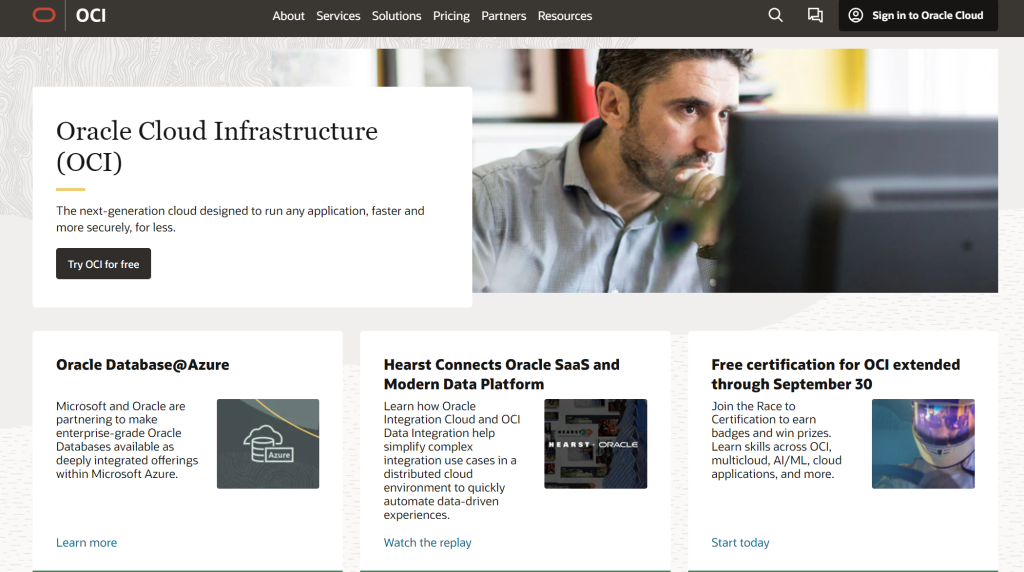
Oracle Database, or RDBMS, is a leading enterprise-grade database management system. Oracle RDBMS provides industrial-strength data management capabilities. With high performance, scalability, security and availability, Oracle powers mission-critical workloads.
The object-relational architecture enables storing complex data beyond just rows and columns. Robust management and tuning tools help optimize database operations.
Key Features
- Enterprise Performance: Database engine optimized for throughput and low latency.
- High Availability: Data protection, failover clustering for 24×7 uptime.
- Scalability: Distributed architecture to linearly scale transactions.
- Security: Encryption, access controls, and auditing to protect sensitive data.
8. Plesk
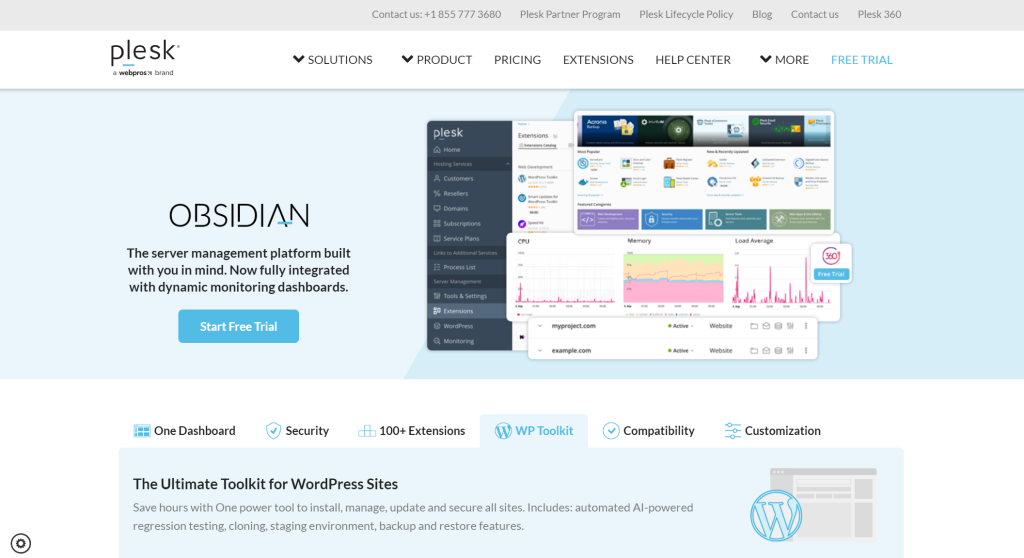
Plesk is a control panel solution for hosting providers to manage Linux or Windows-based web servers. Plesk provides a simple point-and-click interface to manage domains, mail servers, websites, and apps. It helps automate common hosting tasks like provisioning, backups, and monitoring.
Plesk consolidates key hosting functionality into an intuitive UI. This enhances efficiency for managing infrastructure at scale.
Key Features
- Server Management: Add, monitor, and secure servers.
- Domain Management: Manage DNS, mail, and apps for domains.
- Website Management: Build, and manage WordPress or custom websites.
- Security: Firewall manager, vulnerability scanner, malware detection.
Summary
Server management platforms provide the foundation for resilient and efficient IT infrastructure. Businesses need robust tools to monitor, automate, and secure their on-premise, cloud, and container workloads in the face of increasing complexity.
This article explored leading options where each platform caters to specific needs around metrics monitoring, data management, network monitoring, automation, web serving, and more.
With hybrid cloud adoption accelerating, infrastructure visibility and control are imperative in 2023. Server management platforms featured here aim to provide that through sophisticated capabilities.
Whether optimizing existing infrastructure or migrating to the cloud, these platforms enable managing heterogeneous environments seamlessly. This minimizes risk while maximizing performance and efficiency.
FAQs
How many servers can you manage with Server Manager?
Server Manager allows you to centrally manage multiple Windows Servers from one console. There is no set limit on the number of servers that can be managed. Typically organizations can manage up to around 25 servers comfortably through the standard Server Manager interface. For larger environments, add-ons like System Center provide more advanced centralized management.
What is Server management?
Server management refers to the administration of a server’s operating systems and workloads. This includes managing server roles like Active Directory, DNS, DHCP, file sharing, and print management. Key aspects of Windows Server management include monitoring events and performance, automating tasks, applying updates, ensuring high availability, and utilizing access controls.





